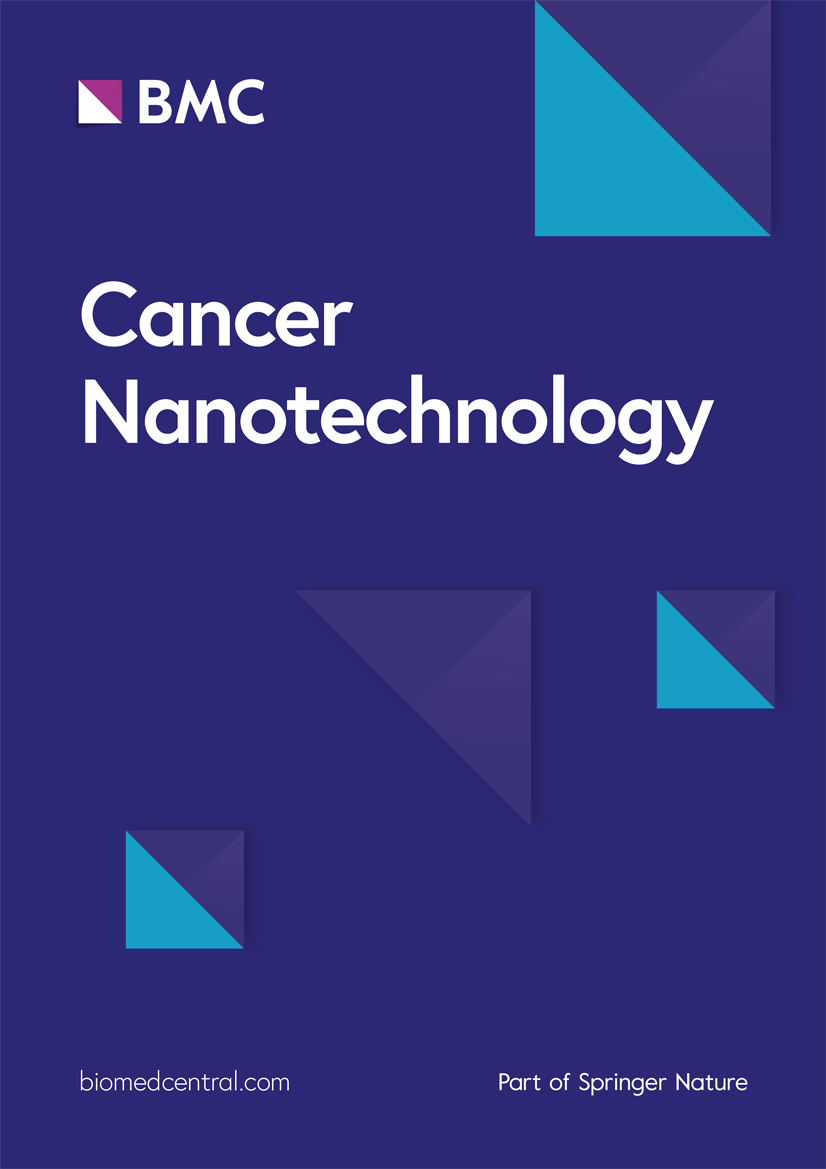Targeting and internalizing PEGylated nanodrugs to enhance the therapeutic efficacy of hematologic malignancies by anti-PEG bispecific antibody (mPEG × CD20)
IF 4.8
2区 工程技术
Q2 NANOSCIENCE & NANOTECHNOLOGY
引用次数: 0
Abstract
Abstract Background PEGylated nanoparticles (PEG-NPs) are not effective for hematologic malignancies as they lack the enhanced permeability and retention effect (EPR effect). Tumor-targeted PEG-NPs can systemically track lymphoma and actively internalize into cancer cells to enhance therapeutic efficacy. We generated an anti-PEG bispecific antibody (BsAb; mPEG × CD20) which was able to simultaneously bind to methoxy PEG on liposomes and CD20 to form multivalent αCD20-armed liposomes. This αCD20-armed liposome was able to crosslink CD20 on lymphoma cells to enhance cellular internalization and the anti-cancer efficacy of the liposomes to lymphoma. We generated mPEG × CD20 and used this bispecific antibody to modify PEGylated liposomal doxorubicin (PLD) through a one-step formulation. Results αCD20-armed PLD (αCD20/PLD) specifically targeted CD20 + Raji cells and enhanced PLD internalization 56-fold after 24 h. αCD20/PLD also increased cytotoxicity to Raji cells by 15.2-fold in comparison with PLD and control mPEG × DNS-modified PLD (αDNS/PLD). mPEG × CD20 significantly enhanced the tumor accumulation 2.8-fold in comparison with mPEG × DNS-conjugated PEGylated liposomal DiD in Raji tumors. Moreover, αCD20/PLD had significantly greater therapeutic efficacy as compared to αDNS/PLD ( P < 0.0001) and PLD( P < 0.0001), and αCD20/PLD-treated mice had a 90% survival rate at 100-day post-treatment. Conclusions Modification of mPEG × CD20 can confer PLD with CD20 specificity to enhance the internalization and the anti-cancer efficacy of PEG-NPs. This therapeutic strategy can conveniently be used to modify various PEG-NPs with anti-PEG BsAb to overcome the lack of EPR effect of hematologic malignancies and improve therapeutic efficacy.抗peg双特异性抗体(mPEG × CD20)靶向和内化聚乙二醇化纳米药物提高血液系统恶性肿瘤的治疗效果
聚乙二醇化纳米颗粒(PEG-NPs)对血液恶性肿瘤无效,因为它们缺乏增强的渗透性和滞留效应(EPR效应)。肿瘤靶向PEG-NPs可以系统跟踪淋巴瘤并主动内化到癌细胞中,从而提高治疗效果。我们生成了抗peg双特异性抗体(BsAb;mPEG × CD20)能够同时与脂质体上的甲氧基PEG和CD20结合形成多价αCD20支脂质体。该αCD20臂脂质体可与淋巴瘤细胞上的CD20交联,增强细胞内化和对淋巴瘤的抗癌作用。我们生成了mPEG × CD20,并使用该双特异性抗体通过一步法修饰聚乙二醇化脂质体阿霉素(PLD)。结果αCD20修饰的PLD (αCD20/PLD)可特异性靶向CD20 + Raji细胞,24 h后可使Raji细胞的PLD内化能力提高56倍,对Raji细胞的毒性也比PLD和对照mPEG × dns修饰的PLD (αDNS/PLD)提高15.2倍。在Raji肿瘤中,mPEG × CD20与mPEG × dns偶联的聚乙二醇化脂质体DiD相比,显著提高肿瘤蓄积2.8倍。αCD20/PLD的治疗效果明显优于αDNS/PLD (P <0.0001)和PLD(P <0.0001), αCD20/ pld处理小鼠100天后存活率为90%。结论mPEG × CD20修饰可使PLD具有CD20特异性,增强PEG-NPs的内化和抗癌作用。该治疗策略可方便地利用抗peg BsAb修饰各种PEG-NPs,克服血液病恶性肿瘤缺乏EPR作用,提高治疗效果。
本文章由计算机程序翻译,如有差异,请以英文原文为准。
求助全文
约1分钟内获得全文
求助全文
来源期刊

Cancer Nanotechnology
Pharmacology, Toxicology and Pharmaceutics-Pharmaceutical Science
CiteScore
5.20
自引率
1.80%
发文量
37
审稿时长
15 weeks
期刊介绍:
Aim:
Recognizing cancer as a group of diseases caused by nanostructural problems (i.e. with DNA) and also that there are unique benefits to approaches inherently involving nanoscale structures and processes to treat the disease, the journal Cancer Nanotechnology aims to disseminate cutting edge research; to promote emerging trends in the use of nanostructures and the induction of nanoscale processes for the prevention, diagnosis, treatment of cancer; and to cover related ancillary areas.
Scope:
Articles describing original research in the use of nanostructures and the induction of nanoscale processes for the prevention, diagnosis and treatment of cancer (open submission process). Review, editorial and tutorial articles picking up on subthemes of emerging importance where nanostructures and the induction of nanoscale processes are used for the prevention, diagnosis and treatment of cancer.
 求助内容:
求助内容: 应助结果提醒方式:
应助结果提醒方式:


